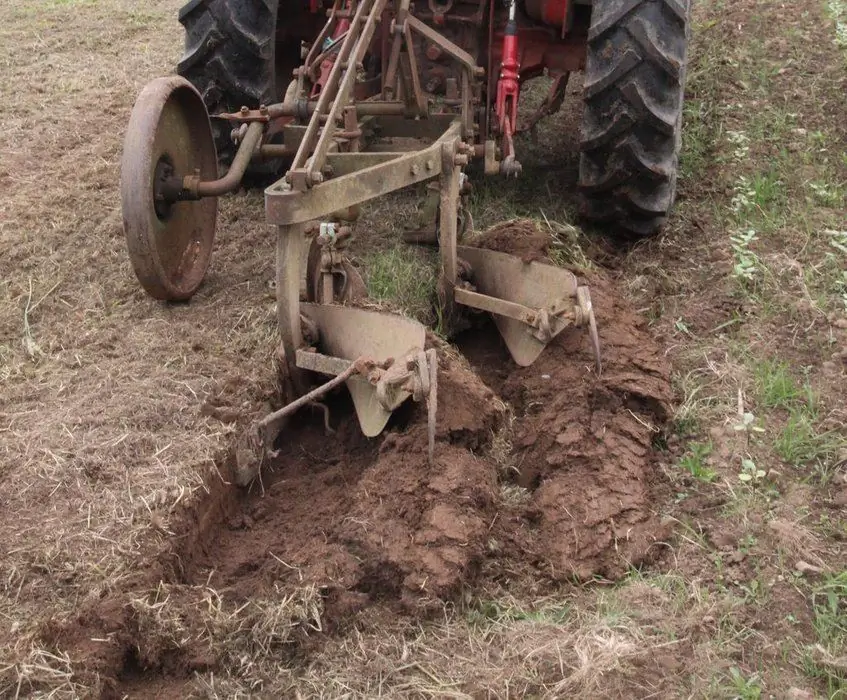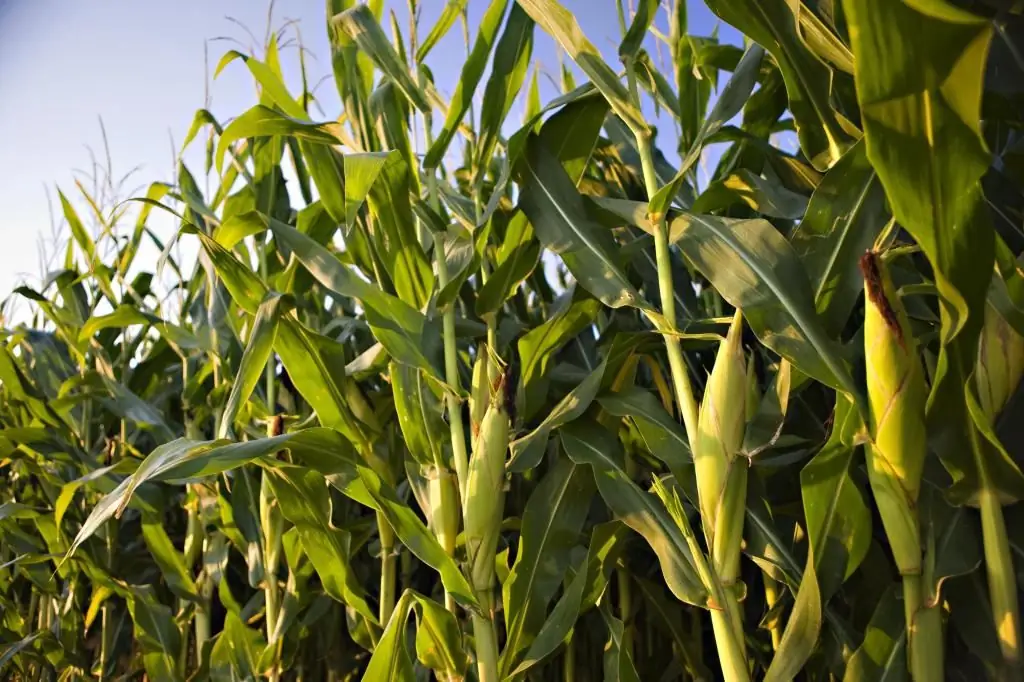2026 Author: Howard Calhoun | [email protected]. Last modified: 2025-01-24 13:10:37
Peas are the most popular of all legumes cultivated in Russia. The fruits of this plant are valued primarily for their excellent taste and high content of easily digestible vegetable protein. The advantage of this culture, among other things, is the relative unpretentiousness in care and high yields. However, you can, of course, get a lot of green mass and pods only if all pea cultivation technologies are strictly followed.
Uses
Peas, along with corn, is a valuable fodder crop. This plant is often used, for example, for making haylage and silage. Vegetable protein fruits and greens of peas can contain up to 27%. Therefore, when feeding them, animals gain weight very quickly. When keeping pigs, for example, some of the expensive concentrates are often replaced with bean hay and peas.

Also, this culture, of course, is widely used in the food industry. Pea flour is sometimes added to wheat flourbaking bakery products. Dry peas are very popular among the population, from which cereals and soups are prepared. The green fruits of this plant are widely used for canning.
Biological features
Technologies for growing peas were developed, of course, taking into account, first of all, its biological characteristics. This plant is grown in our country in many regions. One of its features is resistance to low temperatures at the beginning of the growing season. Pea seeds germinate already at a temperature of 1-2 °C. At the same time, the sprouts of this culture are able to withstand temperatures down to -4-6 °С.
A feature of peas, among other things, is that during germination it does not bring cotyledons to the surface. Therefore, it can be planted deep enough in the soil. Accordingly, peas use the spring moisture to the fullest.
The disadvantages of this crop in terms of cultivation are considered mainly only the exactingness of the temperature and humidity conditions during the period of budding and fruit formation. Also, the disadvantages of peas include the tendency to lodging at the end of the growing season. At present, mustachioed varieties of this crop are often planted in the fields, after ripening the fruits form a woven, fairly stable mass. Harvesting such peas is not too difficult. However, in terms of yield, such varieties are, unfortunately, slightly inferior to ordinary ones.

Technology of cultivation of peas for grain and green mass: predecessors and soils
It is believedthat it is best to plant peas after winter cereals, as well as tilled crops - corn, potatoes, sugar beets. Good results are also obtained by growing this plant after spring cereals. It is not recommended to place peas mainly only after legumes of other varieties. It is desirable to grow this crop on the same field with a frequency of no more than 1 time in 5 years. It is strongly not recommended to plant this variety of legumes also after sunflower, which, as you know, greatly dries up the earth.
Soil peas, like almost any other crop, loves nutritious and loose. It just grows well, for example, on black soil. On soddy-podzolic lands, this crop is allowed to be planted only after their improvement with mineral fertilizers.

What top dressings can be used
During the growing season, peas consume per 1 ton of seeds during the growing season:
- nitrogen - 45-50 kg;
- phosphorus - 16-20 kg;
- potassium - 20-30 kg;
- calcium - 25-30 kg;
- magnesium - 8-13 kg.
According to the technology, the cultivation of field peas should be carried out taking into account all these indicators. They choose specific fertilizers for this crop, of course, including depending on the chemical composition of the soil on the site.

One of the features of peas is that it is able to get quite a lot of nitrogen by fixing it fromair. This is, of course, one of the unconditional advantages of this plant. Nitrogen fertilizers for peas in the process of growing it are usually used less than for many other crops.
Sowing seeds
Technologies for growing peas in the fields, of course, must be followed exactly. But it is equally important to choose and prepare the seeds of this crop correctly before planting. Otherwise, the peas will rise to the field unevenly and not together. It is believed that seeds of this crop with a purity of at least 99% and a germination rate of 95% are suitable for sowing. In this case, the material of large and medium fractions for planting is supposed to be used separately when sowing.
According to the rules stipulated by the cultivation technology, sowing peas, since it is a frost-resistant crop, are usually sown early. Start planting this plant immediately after the soil ripens. Just before sowing, peas are treated with molybdenum or boron preparations. The seeding rate of this crop depends on the variety. Also in this regard, the mechanical features of the soil are taken into account. On average, 0.8-1.4 million seeds of this crop are sown per 1 hectare.
Peas need a lot of moisture to swell and germinate. Therefore, its seeds are buried to a sufficiently large depth.

Care
After sowing in fields with peas, a procedure is usually performed such as rolling the soil with ring-spur rollers. This improves the contact of seeds with the ground. One of the features of peas is, among other things, thatit suffers greatly from weeds in the process of development. Therefore, 4-5 days after its sowing, such an operation as pre-emergence harrowing is also performed. This allows you to destroy up to 80% of weeds on the field.
In the process of development, this culture, among other things, can be damaged by pea aphids. According to the technology of pea cultivation, this pest is supposed to be fought with the help of special preparations. It can be, for example, the "Phosphomid" remedy. Also, when peas bloom, it is often treated with Fufanon. This remedy helps a lot with moth and codling moth.
Harvesting
Biological characteristics and technology of pea cultivation, of course, are interconnected. As already mentioned, this culture, among other things, belongs to the group prone to lodging. In addition, the fruits of this plant often ripen unevenly. Therefore, it is necessary to harvest peas in the fields using a separate method. In the browning phase, up to 70-78% of the pods of the plant are cut across the lightness.
In order to minimize losses, they try to remove all peas on the field within a maximum of 3-4 days. Dried swaths are selected at the moment when the moisture content of the seeds reaches 16-19%. This usually happens 2-3 days after cutting the plants. For green peas, this crop is harvested in the phase of wax ripeness of the fruit.
Growing in combination with oats
For green mass, peas are often cultivated in this way. The fact is that pea-oat mixture is a very valuable natural fertilizer. They plant it in the fields mainlyin order to saturate the soil with nitrogen. Both peas and oats are able to get this trace element from the air.

The technology of cultivation of pea-oat mixture in agricultural enterprises is simple. In fact, it is no different from the method of growing peas alone. The only thing is that the plants in this case are not removed from the field, but embedded in the ground. This operation is performed several times per season to a depth of 10-12 cm.
Recommended:
Spring barley: varieties, sowing dates, cultivation, economic importance

Spring barley is one of the most important food, fodder and industrial crops. Today we will get acquainted with the main characteristics of this crop and the features of its cultivation
Sowing rye: description and cultivation features

Almost half of the world's acreage is devoted to growing cereals. Rye is consistently in the top ten most popular crops. Of course, it is far from the big three cereals (wheat, rice, corn), but almost 13 million tons of production per year is also impressive. For many years, the leaders in the cultivation of rye have been three countries - Germany, Russia and Poland
Nigella sowing: photo, cultivation, sowing dates

Nigerushka in the common people is usually called onion seeds. Being planted in the ground, by the end of the season they give a small set. The latter next year can already be used for growing large heads. In some cases, you can get a real onion from the nigella sowing in one season
Spring wheat: cultivation technology, features of sowing, cultivation and care

About 35% of all grain plantings on the planet today falls on wheat. In purchases, the share of such grain is 53%. Technologies for growing spring wheat in Russia can be used differently. But when cultivating this crop, crop rotation must be observed and careful preliminary preparation of the soil must be carried out
Corn: cultivation technology, features of planting, cultivation and care

Every one of our compatriots has seen and tasted corn. However, not everyone thinks about how important culture it is. Therefore, tell about it in more detail. We will also dwell briefly on the technology of corn cultivation - it will be very useful for novice farmers to learn about this

